Clinical Differential Diagnosis
Portocaval shunt
Micovascular dysplasia
Bladder calculi
Sonographic Differential Diagnosis
Urinary: Cystic calculi and concurrent cystitis. Potential for concurrent urinary tract infection. Liver: Portal vein branch hypoplasia/microvascular dysplasia likely. Non-shunt causes of bile acid elevation also possible such as intestinal dysbiosis or idiopathic transient elevation (See comments below)
Sampling
Surgical liver biopsies were performed which showed arteriolar hyperplasia, portal vein hypoplasia/microvascular dysplasia. Analysis of the bladder calculi (obtained via cystotomy) revealed ammonium biurate calculi.
Outcome
The patient was placed on a medical protocol for microvascular dysplasia, which resulted in resolution of the urinary tract signs.

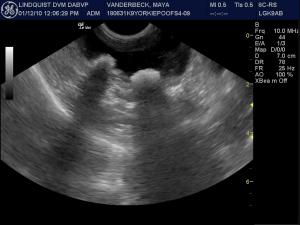
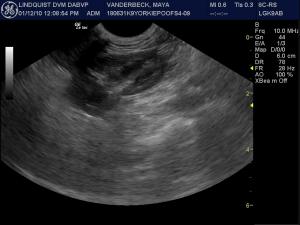
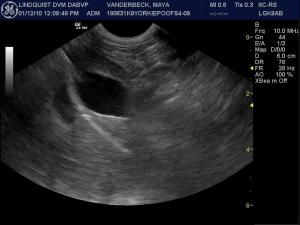
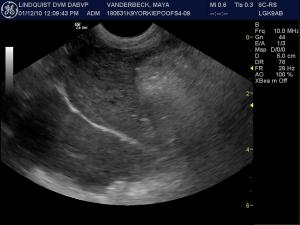
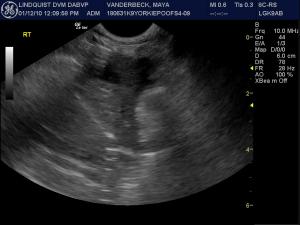
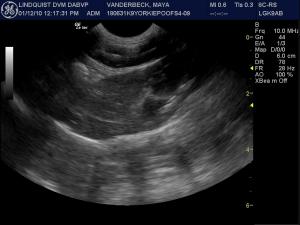

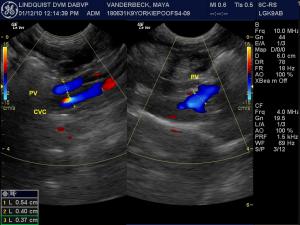
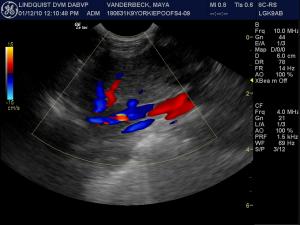

Comments